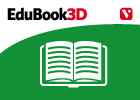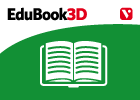Cargando...
Recursos educativos
-
Nivel educativo
-
Competencias
-
Tipología
-
Idioma
-
Tipo de medio
-
Tipo de actividad
-
Destinatarios
-
Tipo de audiencia
-
Creador
Lo más buscado
- Música electrónica
- Repaso de números
- Mujeres famosas de la historia
- La península Ibérica en la Antigüedad
- Actividades para primaria para imprimir
- Israel y Fenicia
- Actividades de comprensión lectora primaria para imprimir
- imágenes lengua
- Escritura pautada
- Frequency adverbs
- Cine infantil
- Divisiones para imprimir
- Relieve de Asia
- Descargar ejercicios de geometría
- Guía de lectura
-

Observe. The Earth from space
EduBook Organización
- 3275 visitas
Look at the satellite images and answer the questions: How would you describe the surface of the Earth as seen in satellite photographs? What are the main colours of the Earth in the photographs? What…
-

Myth Writing Workshop
Tiching explorer Organización
- 1 lo usan
- 8836 visitas
In this workshop we learn how to write a myth, a story that explains a natural phenomenon in a creative way. We learn writing strategies and complete a few warm-up activities to start. Finally we write…
-

Think. The effects of climate change
EduBook Organización
- 3263 visitas
Think about the impact of climate change and show how it could affect these places or living beings in the future: A coastal population. An area that suffers from periodic drought. Animal or plant…
-

Summaries - The Earth's Population
EduBook Organización
- 3268 visitas
1. The distribution of the global population Population density measures how many inhabitants (inhab.) live in one square kilometre. This measurement is expressed as inhab./km2. There are about 7…
-

Check. Coordination systems
EduBook Organización
- 3251 visitas
Remember what you have studied in this section and answer the questions: Make a table listing the parts and functions of the nervous system. What are reflex actions? Give two examples. What are…
-

Before you start - Animals
EduBook Organización
- 1 lo usan
- 3029 visitas
Didactic objectives Understand how animals are classified as vertebrates and invertebrates. Recognise the main characteristics of invertebrates including sponges, cnidarians, echinoderms, worms,…
-

Before you start - Machines and structures
EduBook Organización
- 3223 visitas
Didactic objectives Identify the basic characteristics of electrical current, conductors and insulators. Identify the parts of an electrical circuit and draw a diagram with the correct symbols.…
-

Introduction - Our recent past
EduBook Organización
- 3208 visitas
History tells us what happened in the past. There are many ways to find out about the past. We can read diaries and books, and look at old photos. We can also find out about the recent past by asking…
-

Check. Fertilisation
EduBook Organización
- 3214 visitas
Look at the pictures and answer the questions: What animal is this? What type of fertilisation is characteristic in this animal? How does the embryo develop? In reproduction on land, what are the…
-

Introduction - Plant reproduction
EduBook Organización
- 3201 visitas
In this unit we are going to learn about how flowering and non-flowering plants reproduce. The reproductive organs of most plants are in the flowers. It is in this part of the plant that the two…
Te estamos redirigiendo a la ficha del libro...











